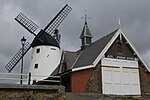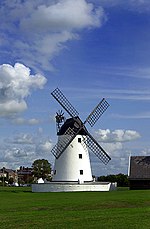Ribble and Alt Estuaries
Bodies of water of the Irish SeaEstuaries of EnglandRamsar sites in EnglandSites of Special Scientific Interest in LancashireSites of Special Scientific Interest in Merseyside ... and 1 more
Special Protection Areas in England

The Ribble and Alt Estuaries lie on the Irish Sea coast of the ceremonial counties of Lancashire and Merseyside in the traditional county of Lancashire in north-west England, and form the boundaries of a number of conservation schemes.
Excerpt from the Wikipedia article Ribble and Alt Estuaries (License: CC BY-SA 3.0, Authors, Images).Ribble and Alt Estuaries
West Lancashire North Meols
Geographical coordinates (GPS) Address Nearby Places Show on map
Geographical coordinates (GPS)
| Latitude | Longitude |
|---|---|
| N 53.71 ° | E -2.97 ° |
Address
North Meols
West Lancashire, North Meols
England, United Kingdom
Open on Google Maps








